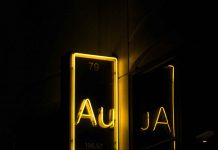 LONDON – BUSINESS – Global gold demand rose 2% in 2016 to reach 4,309 tonnes (t), the highest level since 2013, according to the World Gold Council’s latest Gold Demand Trends report. This was largely driven by inflows into gold-backed Exchange Traded Funds (ETFs) of 532t, the second-highest year on record, as investors responded to concerns over future monetary policy, geopolitical uncertainty and negative interest rates.
LONDON – BUSINESS – Global gold demand rose 2% in 2016 to reach 4,309 tonnes (t), the highest level since 2013, according to the World Gold Council’s latest Gold Demand Trends report. This was largely driven by inflows into gold-backed Exchange Traded Funds (ETFs) of 532t, the second-highest year on record, as investors responded to concerns over future monetary policy, geopolitical uncertainty and negative interest rates.
Continued global economic and political uncertainty, most notably Brexit, the US election and currency weakness in China, helped to boost overall investment demand by 70%, to a four-year high of 1,561t. The price dip in November led to a strong recovery in the bar and coin market in the final quarter of 2016, although this didn’t offset weak demand in the first three quarters; annual demand reached 1,029t, down 2% year-on-year.
Alistair Hewitt, Head of Market Intelligence at the World Gold Council, commented: “2016 saw an unprecedented degree of political upheaval, which underpinned huge institutional investor flows into gold. Retail investors – having been subdued for most of the year – responded quickly to the price fall in Q4, a fact reflected by a surge in demand in the physical market. With an equally uncertain political and economic environment likely in 2017, we expect investment demand to remain buoyant.”
While overall investment demand rose sharply, it was counterbalanced by declines in both jewellery, a 15% fall in 2016 to 2,042t, and central bank purchases. Central banks faced a challenging backdrop, with increased pressure on foreign exchange reserves resulting in demand falling by 33% to 384t for the year. Despite this, 2016 was the seventh consecutive year of net purchases by central banks.
In spite of resilient consumer demand in the fourth quarter of 2016, the two leading gold markets, India and China, both experienced a drop in consumer buying in 2016, falling 21% and 7% respectively. In China, jewellery demand was dampened due to a high gold price throughout much of the year, coupled with constrained levels of supply in Q4, owing to a tightening of currency controls in the country.
Indian demand also faced a raft of challenges throughout the year, including regulatory changes, culminating in the surprise demonetisation policy, which severely hampered demand in both the jewellery and retail investment sectors.
Alistair Hewitt added: “The Indian market faces a challenging time in 2017. We anticipate many of the headwinds that affected demand in 2016 to continue into this year, but we are confident that the Government’s move towards a more transparent gold market will ensure that gold remains an important asset class for millions of people in India.”
Total supply reached 4,571t in 2016, an increase of 5% compared with 2015. Growth in the sector was supported by net producer hedging, which doubled in 2016, as gold producers saw an opportunity to secure cashflow at higher prices. It was also supported by high levels of recycling in Europe and the Middle East, driven by weak currencies and a high gold price. Mine production remained virtually unchanged from 2015 as a result of industry cost-cutting schemes, however, higher gold prices and lower costs have seen a renewed interest in exploration and increased project development is likely in the years ahead.
The key findings included in the Gold Demand Trends Full Year 2016 report are as follows:
Full year 2016 figures:
- Overall demand for FY 2016 was 4,309t, up 2% compared with 4,216t in 2015
- Total consumer demand for FY 2016 fell by 11% to 3,071t, from 3,436t in 2015
- Total investment demand grew by 70% to 1,561t in FY 2016 from 919t in 2015
- Global jewellery demand was down 15% at 2,042t, compared with 2,389t in 2015
- Central bank demand was 384t, down 33% compared with 577t in 2015
- Demand in the technology sector decreased by 3% to 322t from 332t in 2015
- Total supply grew by 5% to 4,571t this year from 4,363t during 2015. This was largely driven by recycling, which increased 17% to 1,309t from 1,117t in 2015.
Q4 2016 figures:
- Overall demand was 994t, a fall of 11% compared with 1,123t in Q4 2015
- Total consumer demand increased by 5% to 989t from 940t in Q4 2015
- Total investment demand fell 21% to 174t this quarter compared with 220t last year
- Global jewellery demand was down 5% at 622t, compared with 653t in Q4 2015
- Central bank demand reached 114t this quarter, a fall of 32% from 169t in Q4 2015
- Demand in the technology sector increased by 3% year-on-year, up to 84t compared with 82t during Q4 2015
- Total supply fell by 4% to 1,036t this quarter from 1,081t during Q4 2015. Recycling increased by 5% to 250t during the fourth quarter, from 239t during Q4 last year.





